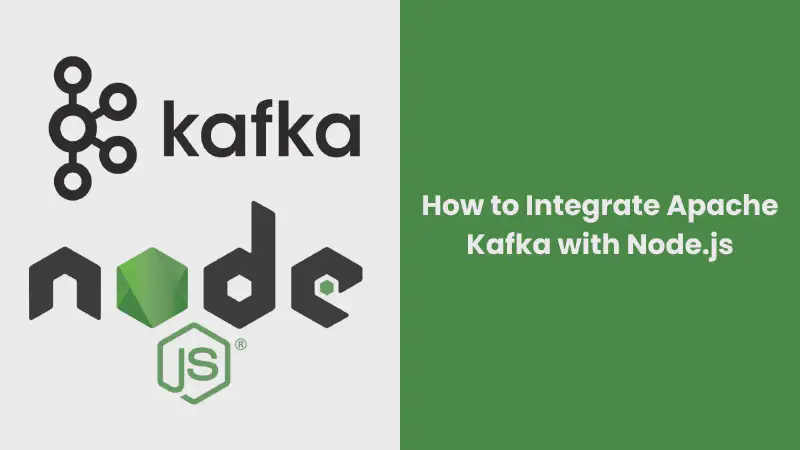Apache Kafka is a powerful distributed event streaming platform that can handle high-throughput data streams in real-time. Node.js, with its asynchronous capabilities, is an excellent choice for building scalable applications that can leverage Kafka’s strengths. In this guide, we will explore how to integrate Apache Kafka with Node.js, covering setup, configuration, and practical examples.
Installing Kafka Packages for Node.js
To interact with Kafka from a Node.js application, you need to install Kafka client libraries that facilitate communication with Kafka brokers. The most popular Kafka client libraries for Node.js are kafkajs.
kafkajs is a popular choice due to its ease of use and active maintenance. Here’s how to install and set it up:
If you don’t already have a Node.js project, create one using npm or yarn.
|
|
Use npm to install kafkajs:
|
|
Alternatively, if you are using Yarn:
|
|
Creating a Kafka Producer in Node.js
A Kafka producer is responsible for sending records (messages) to Kafka topics. Producers are typically used in scenarios where data needs to be streamed from one or more sources into Kafka for further processing.
Here’s a simple example of a Kafka producer in Node.js using the kafkajs library:
|
|
Detailed Explanation
- Client Configuration:
- The
Kafkainstance is initialized with aclientIdand a list of broker addresses. TheclientIdis a unique identifier for the Kafka client, useful for logging and monitoring purposes.
- The
- Producer Initialization:
- The producer is created using the
kafka.producer()method.
- The producer is created using the
- Sending Messages:
- The
sendmethod is used to send messages to a specified topic. Each message can include various properties such askey,value,partition, andtimestamp.
- The
Creating a Kafka Consumer in Node.js
A Kafka consumer reads records from Kafka topics and processes them. Consumers are essential for building data pipelines, real-time analytics, and event-driven applications.
Here’s a simple example of a Kafka consumer in Node.js using the kafkajs library:
|
|
- Consumer Group:
- Consumers in Kafka belong to consumer groups. Each consumer in a group reads data from a unique subset of partitions, enabling parallel processing and ensuring that each record is processed only once within the group.
- Subscription:
- The
subscribemethod registers the consumer to a specific topic. ThefromBeginningflag determines whether the consumer should start reading from the beginning of the topic or only new messages.
- The
- Message Processing:
- The
runmethod starts the consumer and processes each message using theeachMessagehandler. This handler receives metadata about the message, including the topic, partition, offset, and the message value.
- The
Conclusion
Integrating Apache Kafka with Node.js allows you to build scalable, real-time data streaming applications. By following this guide, you have learned how to set up Kafka, create producers and consumers in Node.js, and apply advanced configurations and best practices. With these tools and knowledge, you can leverage the full potential of Kafka and Node.js in your projects.
Related Article: Implement Kafka and Node.js in Microservice Architecture
